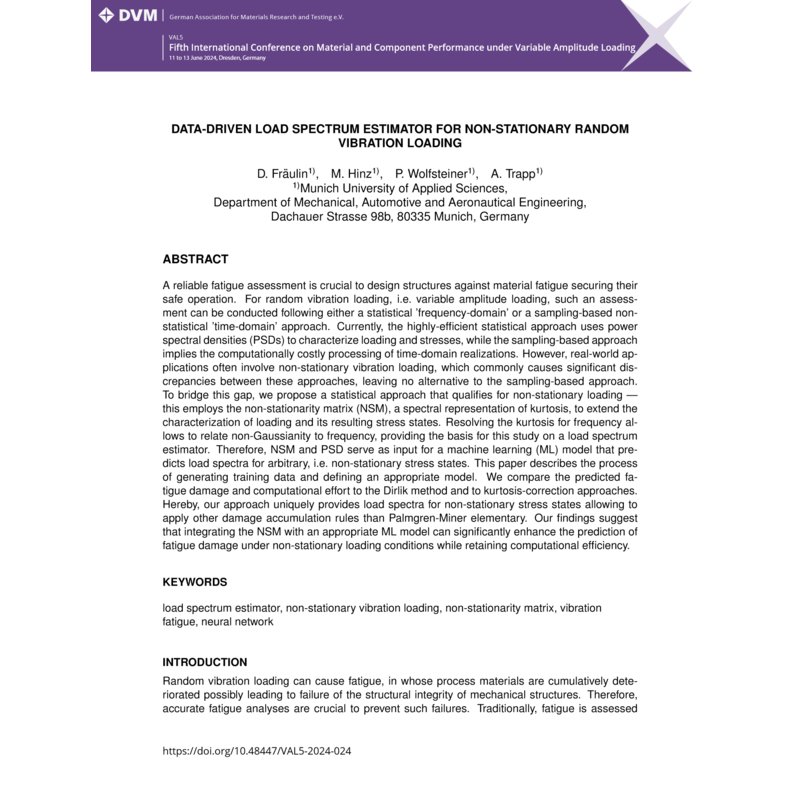- Nur online erhältlich



A fatigue assessment is essential to design structures against material fatigue. For random vibration loading, i.e. variable amplitude loading, such an assessment can be conducted following either a statistical or a sampling-based 'non-statistical' approach. Currently, the highly-efficient statistical approach uses power spectral densities (PSD) to characterize loading and stresses, while the sampling-based approach implies the computationally costly processing of time-domain realizations. However, real-world applications often involve non-stationary vibration loading, which commonly causes significant discrepancies between these approaches, leaving no alternative to the sampling-based approach. To bridge this gap, we propose a statistical approach that qualifies for non-stationary…

Datenschutzbedingungen (bearbeiten im Modul "Kundenvorteile")

Lieferbedingungen (bearbeiten im Modul "Kundenvorteile")

Rücksendebedingungen (bearbeiten im Modul "Kundenvorteile")
A fatigue assessment is essential to design structures against material fatigue. For random vibration loading, i.e. variable amplitude loading, such an assessment can be conducted following either a statistical or a sampling-based 'non-statistical' approach. Currently, the highly-efficient statistical approach uses power spectral densities (PSD) to characterize loading and stresses, while the sampling-based approach implies the computationally costly processing of time-domain realizations. However, real-world applications often involve non-stationary vibration loading, which commonly causes significant discrepancies between these approaches, leaving no alternative to the sampling-based approach. To bridge this gap, we propose a statistical approach that qualifies for non-stationary loading. This employs the non-stationarity matrix (NSM) to characterize non-stationary loading and its resulting stress states after processing for linear systems theory. The statistical response characterization by PSD and NSM then serves as input for a machine learning (ML) model that predicts load spectra. In this contribution we detail the process of generating training data and defining an appropriate model. We compare the predicted fatigue damage and computational effort to those of the established approaches. Our findings suggest that the integration of the non-stationarity matrix for structural dynamics in connection with an appropriate ML model can significantly enhance the prediction of fatigue damage under non-stationary loading conditions while retaining computational efficiency.
The aim of this contribution is to outline a statistical load spectrum estimator. Its goal is to improve fatigue strength predictions under realistic non-stationary vibration loading where estimators like the Dirlik method fail, while preserving the computational efficiency of such a statistical fatigue assessment. We outline the essential background on statistical characterization of random processes, fatigue damage evaluation and spectral estimators. Subsequently, we detail our study into a data-driven load spectrum estimator and cover its design principles, the data generation, the neural network architecture, and its training. Following, the approach is showcased by exemplary data which compares the proposal with established fatigue evaluation approaches. Finally, our contribution concludes with a discussion of the results and an outlook.